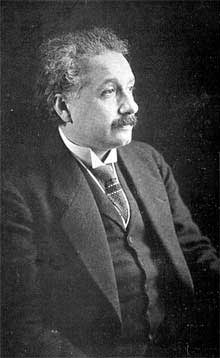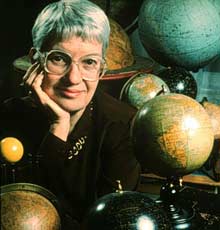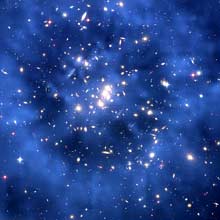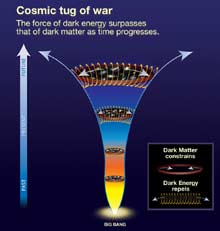
December 16, 2008
Just when scientists think they’ve got the universe’s number, they discover something that throws it all into a cocked hat. It happens again and again: Einstein himself was knocked askew by the expanding universe and some of the absurdities of quantum theory, which he stubbornly refused to accept. His intellectual descendants hardly had time to right themselves from the discovery of dark matter (NH, 9/07), first confirmed in the late 1970s, when dark energy blew them over in the 1990s (see “Dark Energy Crisis,” by Donald Goldsmith, in the current print issue, Natural History 12/08–1/09).

“Heroes need tragic flaws which lead to their downfall, and yet are so much part of their make-up that without the flaw, they would not have been heroes.” A fascinating analysis of Albert Einstein’s limitations.
“Try to envision a typical spiral galaxy, such as our Milky Way, as a relatively flat, glowing disk embedded in a spherical halo of invisible material.” Astrophysicist Vera Cooper Rubin, who amassed much of the evidence for the preponderance of unseen dark matter in galaxies (dark matter’s mater?), also wrote about it [PDF] with brilliant lucidity in the calm before the storm of the “dark energy crisis.”
“We would all love to out-Einstein Einstein by coming up with a better theory of gravity.” If gravity could be demonstrated not to be a constant force, there would be no need for such weird hypothetical entities as dark matter and dark energy. But the evidence that dark matter, at least, is real keeps on coming.
“The implication was almost beyond belief”: The stunning evidence that the expansion of the universe is accelerating sends scientists into a tailspin of “denial, anger, bargaining, depression and acceptance. Thanks to a number of independent observations, we are now well over the first stage.” And there’s more evidence.
Hubble Site explores dark energy [multimedia].
“[N]ow, nearly a century later, his blunder is beginning to look like yet another stroke of uncanny genius.” At least some of Einstein’s stubbornness pays off.
“[M]odern cosmology has at best very flimsy observational support.” Some astronomers, Cardiff (Wales) University’s Michael J. Disney for one, aren’t buying “heroic and yet insubstantial notions such as ‘dark matter’ and ‘dark energy.’”
“To suppose that the ultimate nature of reality is founded in twenty-first century human physics seems remarkably hubristic,” concludes a musing on the anthropic principle, the moebius-strip-like mystery that “the Universe we observe must be consistent with the existence of observers.” If we were seeing only slightly different values for such constants as gravitation and the strong force, there’d be no us to see them. But is this the only possible universe?
For all our mighty light-gathering instruments and formidable equations, Vera Rubin says, we’re still almost in the dark:
Imagine, for a moment, that one night you awaken abruptly from a dream. Coming to consciousness, blinking your eyes against the blackness, you find that, inexplicably, you are standing alone in a vast, pitch-black cavern. Befuddled by this predicament, you wonder: Where am I? What is this space? What are its dimensions?

Groping in the darkness, you stumble upon a book of damp matches. You strike one; it quickly flares, then fizzles out. Again, you try; again, a flash and fizzle. But in that moment, you realize that you can glimpse a bit of your surroundings. The next match strike lets you sense faint walls far away. Another flare reveals a strange shadow, suggesting the presence of a big object. Yet another suggests you are moving—or, instead, the room is moving relative to you. With each momentary flare, a bit more is learned.

In some sense, this situation recalls our puzzling predicament on Earth. Today, as we have done for centuries, we gaze into the night sky from our planetary platform and wonder where we are in this cavernous cosmos. Flecks of light provide
some clues about great objects in space. And what we do discern about their motions and apparent shadows tells us that there is much more that we cannot yet see.



(Annie Gottlieb) |
Comments (add yours!)

Return to November-December home
|





